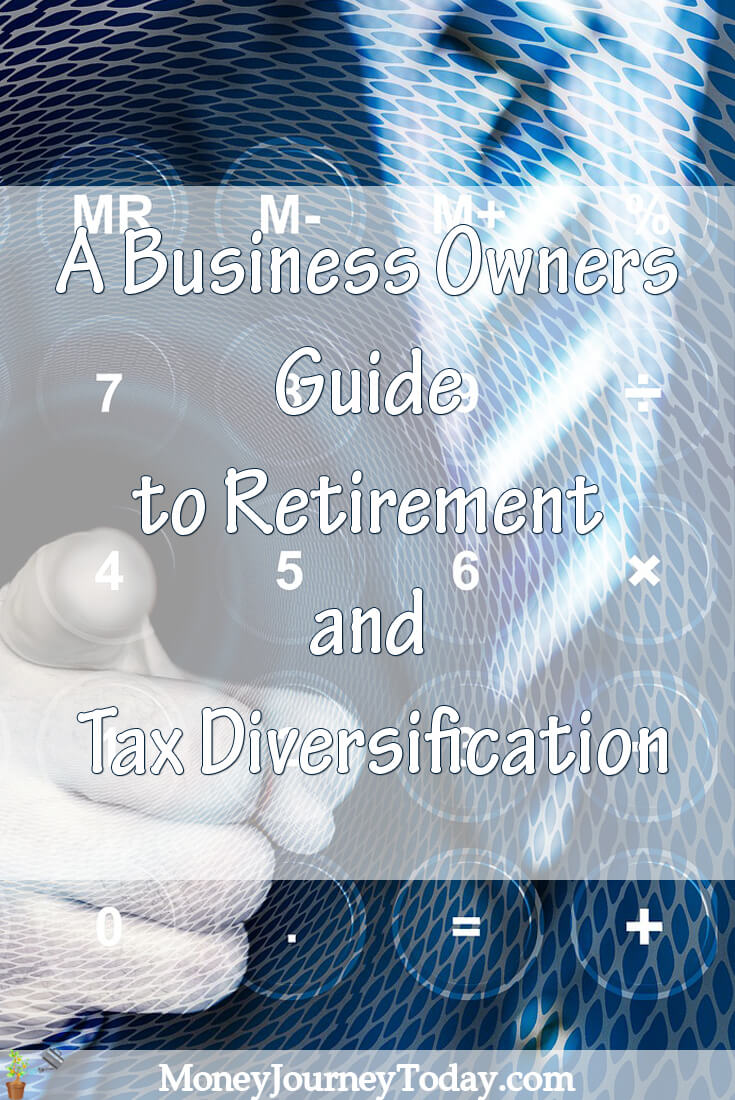Business owners have more options to save for retirement than individuals who do not own a business. Depending on certain factors, some options will make more sense than others.
In many cases, the desire to accumulate assets for retirement is often the byproduct of a greater desire to reduce or avoid income taxes today.
From a tax-efficiency perspective, making a tax-deductible contribution to a retirement plan, like a 401(k), with tax-deferred growth is generally a great option. The downside is all distributions will be taxed at ordinary income tax rates in the year they are received.
One could argue you are in a higher tax bracket when working and earning income than you will be during retirement. The challenge is it’s difficult to know what the actual ordinary income and capital gains tax rate will be at retirement and during retirement. As recently as December 22, 2017, individual tax rates changed again.
This is why, now more than ever, it is important for business owners to diversify the tax treatment of their retirement assets. The premise is simple. When you retire you want to have three types of assets that are taxed differently:
1. Assets taxed as ordinary income,
2. Assets taxed as capital gains, and
3. Assets providing tax-free income
Tax diversification allows business owners to reduce their exposure to tax law changes during retirement, while benefiting from existing tax rules today.
The following is a short list of strategies demonstrating different ways business owners can achieve tax diversification for retirement.

Employer Sponsored Retirement Plans
Employer sponsored retirement plans are retirement strategies made available through an employer. These sponsored plans fall into two categories: defined contribution and defined benefit.
The most common employer-sponsored retirement plan is a 401(k). It allows employees to contribute 100-percent of their income up to $18,500 on a pre-tax basis in 2018. For those over Age 50, a catch-up contribution of $6,000 is permissible in addition to the $18,500.
In many cases, a 401(k) plan may place limits on an owner’s ability to maximize their contributions without some form of matching employee’s contributions. Business owners interested in contributing more than what is allowed under a 401(k) should consider a profit sharing plan or defined benefit plan.
The difference between a profit sharing plan or defined benefit plan, then a 401(k), is contributions made to these types of plan are made entirely by the company, and not the employee. Many high- income earning business owners will consider using these types of plans.
A profit sharing plan allows a business owner to contribute up to $55,000 from all sources, which would include contributions to a 401(k) plan. For defined benefit plans, the limit for the maximum annual benefit rose to $220,000 from $215,000 in 2018.
Defined benefit plans are calculated different than 401(k) and Profit Sharing Plans, which are considered defined contribution plans. Depending on many factors, contributions to a defined benefit plan are based on funding a benefit you will receive at retirement. This can often result in the business owner being able to contribute significantly more (think $100,000 plus) than they would be able to under an alternative qualified retirement plan.
However, to participate in these plans, the employer is required to provide a similar benefit to employees. As a result, a business owner is unable to setup a plan for just themselves, and not provide a benefit for their employees.
In certain cases, the costs of establishing these plans can outweigh the benefits of a business owner implementing them. Especially in situations where there a lot of employees.
Restricted Property Trust
A lesser known plan that can be very effective for business owners is a Restricted Property Trust.
A restricted property trust allows the owner of a business to make a 100-percent corporate deductible contribution to the trust. The participant will owe personal income taxes on approximately 30-percent of the total contribution.
Employers can be selective in who participates in the plan. You can include any number of employees, or simply do it for yourself. The trust owns a conservative whole life insurance policy, and requires a minimum funding period of 5-years. Once funding is completed, the policy is distributed from the trust to the participant. At which time, a small tax is owed and paid for from the policy.
After successful distribution of the policy from the trust, the business owner can access a tax-free stream of income from the policy. For comparative purposes, a business owner would typically have to earn more than 8-percent on after-tax income to equal the returns available from the Restricted Property Trust.
Life Insurance Retirement Plan
A life insurance retirement plan, often referred to as LIRP, is nothing more than an overfunded permanent life insurance policy. When structured properly, a life insurance retirement plan can provide the owner with tax-free income.
A business owner would not have to include any employees to participate because contributions to the plan are made with after-tax dollars. The business owner would fund the policy for a number of years. Once funding is complete, the business owner would be able to access tax-free income from the policies cash value.
There are several types of life insurance policies that can be used for this type of plan, ranging from conservative to aggressive. The key when designing a life insurance retirement plan is to reduce the death benefit as much as possible to maximize the growth of the policy’s cash value.
Conclusion
In an environment where it can be difficult to predict where tax rates will be when we retire, we are only guessing when it comes to what is the most tax-efficient way to save for retirement. It is very difficult to compare different types of plans because taxes influence so much of how they are calculated.
By diversifying your tax allocation, you will be able to determine which tax class makes the most sense to access based on the tax environment we are in at the time you need the income.

[…] Small business owners have to tackle retirement all on their own, as opposed to having the boss handle all contributions to a 401(k). […]
[…] advisers with authority in the field of business investments can ensure that company spending is kept to a minimum and offer consistent, face-to-face advice covering wise company purchases. So, money spent on […]